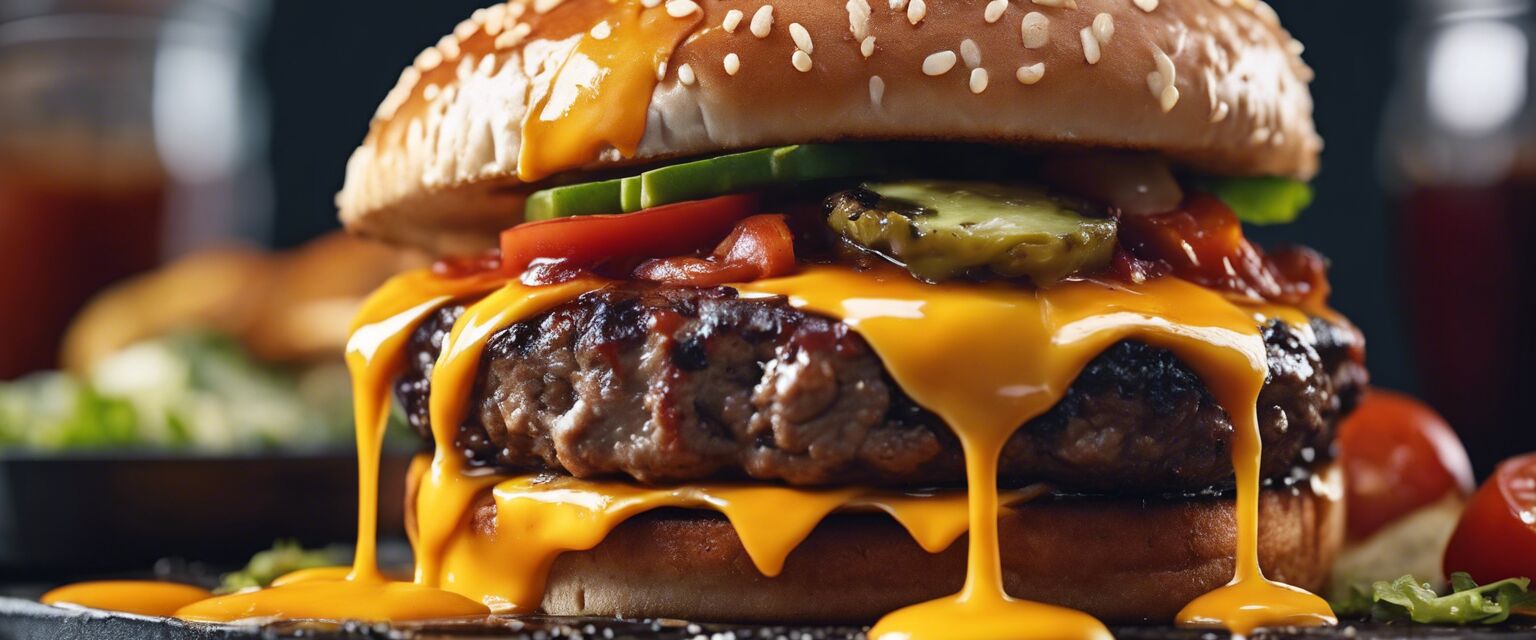
Science of grilling burgers
Key takeaways
- The Maillard reaction is crucial for flavor development.
- Temperature control is essential for juicy burgers.
- Letting burgers rest after grilling retains moisture.
- Different grilling methods produce unique flavors.
- Using the right tools improves the grilling process.
Grilling burgers is not just an act of cooking; itâs a science that combines chemistry, technique, and a bit of art. Understanding the principles behind grilling can elevate the quality of your burgers significantly, leading to mouthwatering results that will impress your family and friends. This article delves into the intricacies of the grilling process, helping you master the craft of creating the perfect burger.
Understanding the Maillard reaction
The Maillard reaction is a form of non-enzymatic browning that occurs when proteins and sugars in food react at high temperatures. This chemical reaction is what gives grilled burgers their rich flavor and appealing color. Hereâs how it works:
| Reaction Component | Function |
|---|---|
| Heat | Initiates the reaction, causing sugars and amino acids to bond. |
| Protein | Provides amino acids that lead to flavor compounds. |
| Sugar | Contributes to caramelization and browning. |
Optimal cooking temperature
To achieve optimal results in grilling, aiming for a cooking temperature between 375°F and 450°F is ideal. Hereâs a quick reference for various burger doneness levels:
| Doneness Level | Internal Temperature |
|---|---|
| Rare | 120°F to 125°F |
| Medium Rare | 130°F to 135°F |
| Medium | 140°F to 145°F |
| Medium Well | 150°F to 155°F |
| Well Done | 160°F+ |
Juiciness and resting time
One common mistake is cutting into a burger immediately after grilling. Allowing your burgers to rest for about 3-5 minutes before serving is crucial!
- Resting allows juices to redistribute, resulting in a juicier burger.
- It enhances flavor and texture, making each bite satisfying.
Grilling methods and their effects
Different grilling methods can lead to different flavor profiles. Letâs explore a few popular methods:
| Grilling Method | Flavor Profile | Best For |
|---|---|---|
| Direct grilling | High heat, charred flavor | Quick-cooking burgers |
| Indirect grilling | Smoky, tender flavor | Thicker burgers and roasts |
| Smoking | Deep, rich flavor | Slow-cooked, BBQ-style burgers |
Essential tools for grilling
Having the right grilling tools can make a significant difference in your burger grilling experience. Here are some essentials:
Beginner's section
- Grill thermometer: For accurate temperature readings.
- Spatula: A sturdy spatula to flip burgers without breaking.
- Grill tongs: To handle hot items safely.
- Basting brush: For adding sauces while grilling.
Grilling accessories
Enhance your grilling experience with the right accessories. Consider checking out our detailed guides on grill accessories and grill covers for protecting your equipment.
Final thoughts on grilling burgers
Grilling burgers perfectly involves understanding the fundamental science behind the process. Mastering temperature control, allowing proper resting times, and utilizing different grilling methods can lead to incredibly delicious results. Armed with the knowledge from this article, you can elevate your burger grilling game.
Join the grilling community!
Feel free to explore more about various grilling options. Check out our sections on charcoal grills, electric grills, and gas grills to find the right grilling setup for you.
Pros
- Understanding the science helps improve flavor.
- Better control leads to consistent results.
- Experimenting with methods enhances creativity.
Cons
- Requires practice to master techniques.
- Some methods may need special equipment.
Image inspirations for grilling your burgers
To visualize your perfect burger grilling experience, imagine a setting like this:











